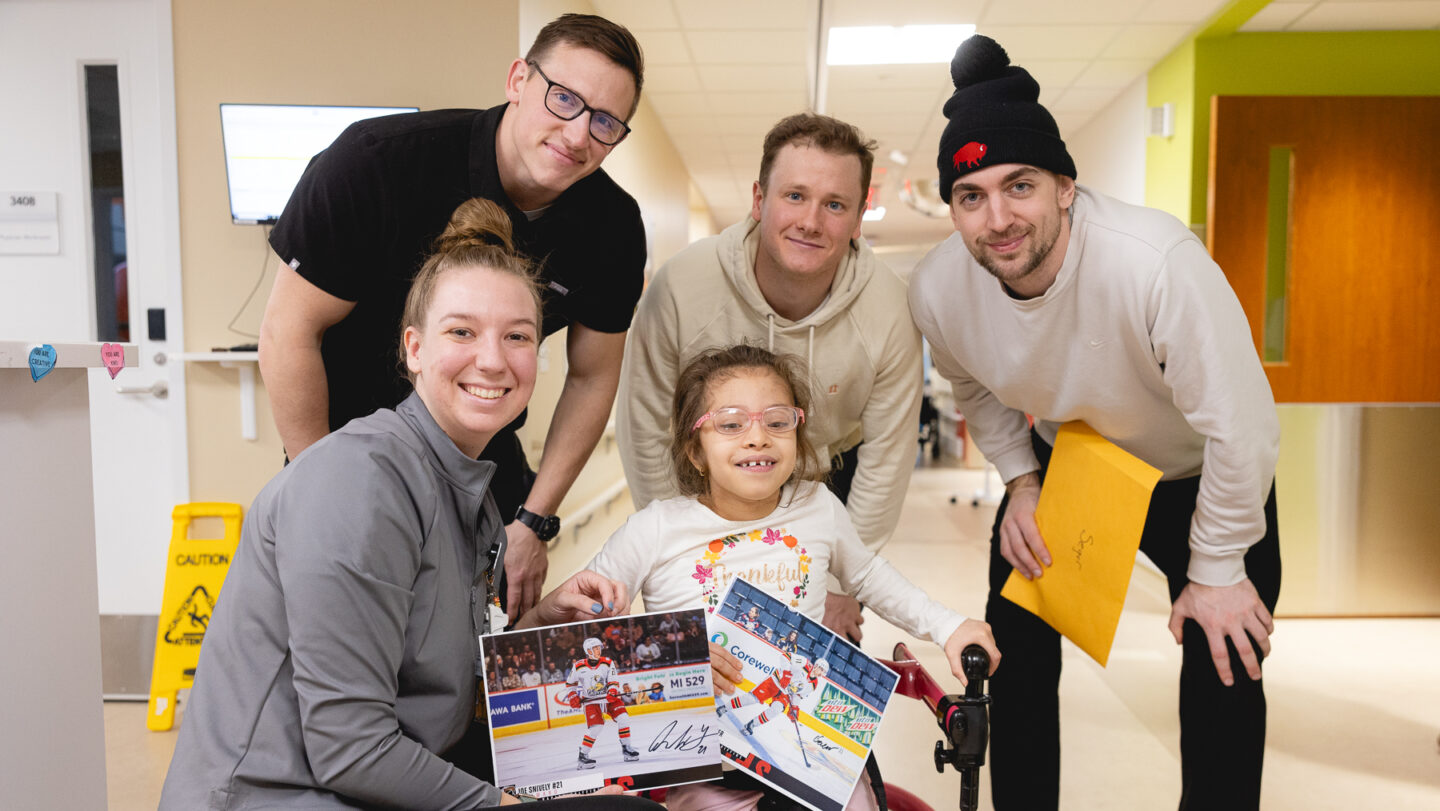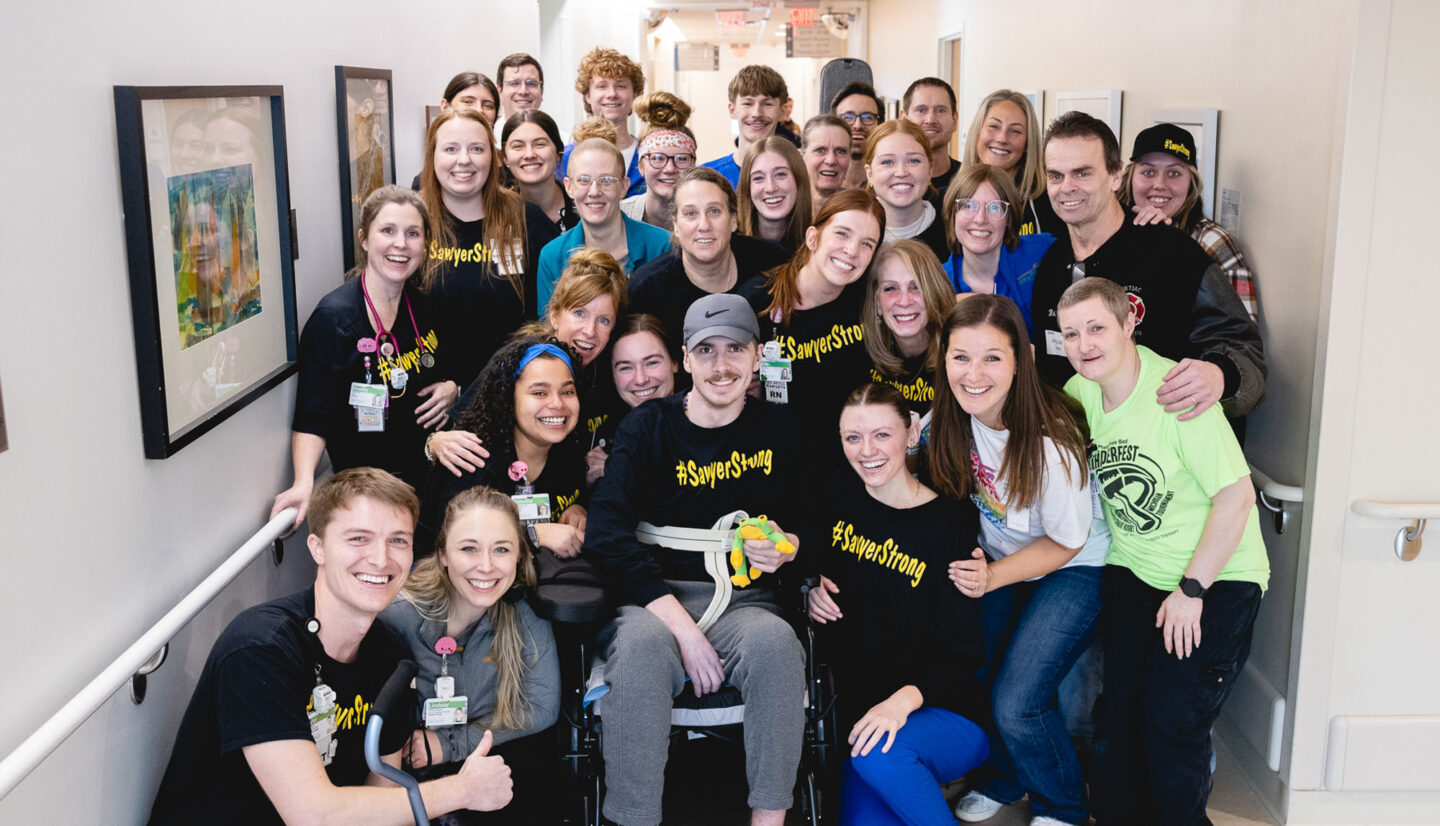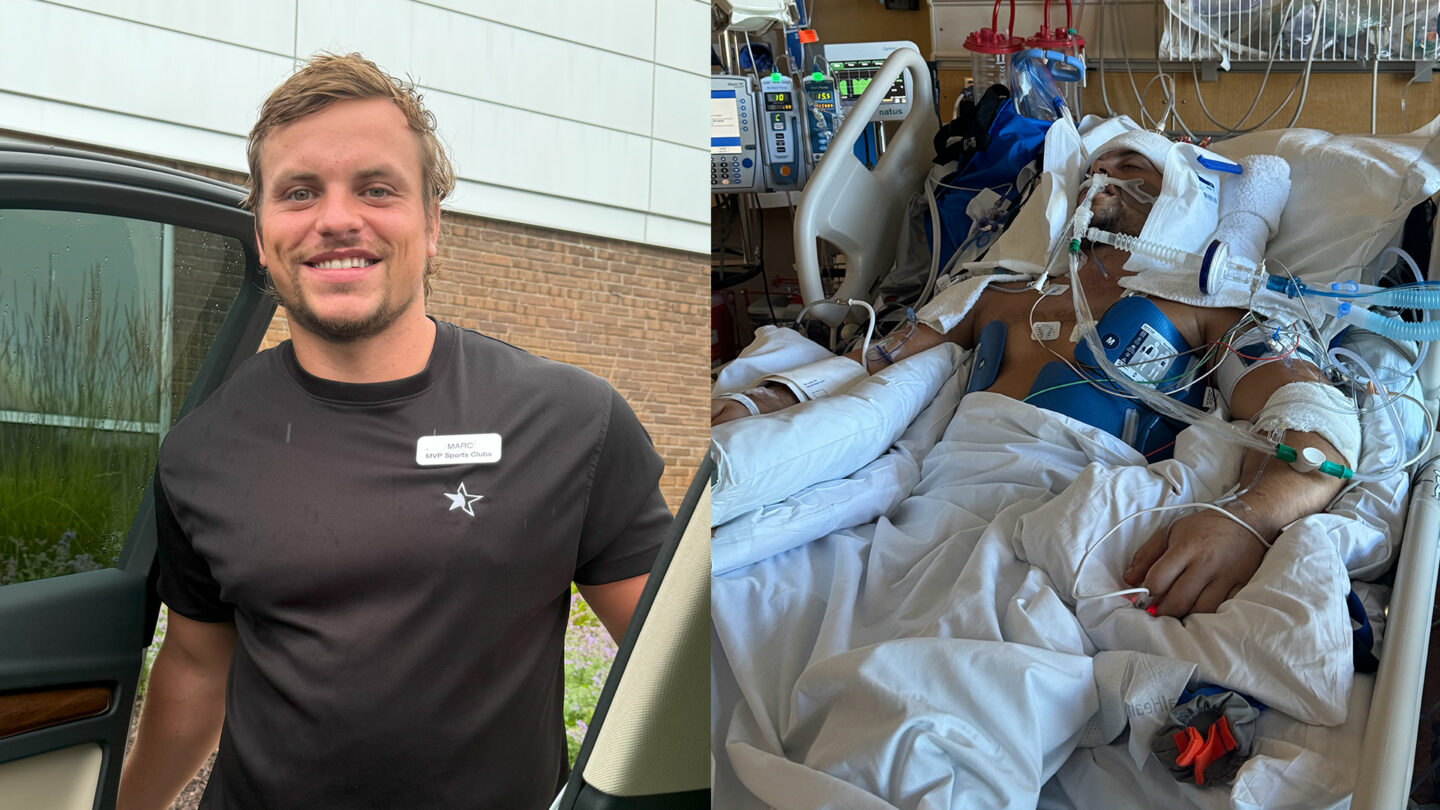Posted on January 18, 2011
Baby Sayla needed helmet for flat spot on head
“When I took Sayla to our physician for her four-month checkup, I questioned her head tilt and she had a bump on her forehead,” said Shanda Bender, Sayla’s mom. “My doctor said the bump was because of the flat spot on her head, and suggested I try repositioning techniques. At that point, we met with a physical therapist, and began treatment for torticollis.”
The therapist also recommended that Sayla have an evaluation for a cranial remolding helmet.
The flat spot on Sayla’s head, known as plagiocephaly, is an asymmetrical head shape, most often a flattening of the back of the head on one side.
Sayla’s head tilt was diagnosed as torticollis, which is a shortening or tightening of the muscle that goes from behind the ear to the front of the neck. This muscle helps turn her head and bring her ear down to her shoulder.
Torticollis and plagiocephaly don’t always occur together, but like Sayla, they often do. If plagiocephaly is diagnosed, Mary Free Bed’s therapy staff works with Mary Free Bed Orthotics for evaluation and for helmet fitting to reshape your baby’s head. Physical therapy is frequently recommended for babies with torticollis.
While it is possible for some babies’ heads to reshape on their own, those who don’t likely will require a cranial remolding helmet. To make a helmet for your baby, Mary Free Bed Orthotics scans your child’s head to determine the severity of the flat spot. Data from the scan is used to create a model of your child’s head. Then, the helmet is made using the model of your child’s head without the flat spot. This allows your child’s head to grow and reshape itself within the helmet.
It’s hard to know for sure if your baby has plagiocephaly, torticollis, or both. Sayla’s mom adds, “When I took Sayla to Mary Free Bed, her head didn’t look that bad to the naked eye. However, the scan showed Sayla was a candidate for the helmet.”
If you suspect your baby has torticollis and/or plagiocephaly you should:
- Visit your pediatrician to receive a diagnosis
- Reposition your baby in the opposite direction he prefers to look during play and sleep to help redistribute the pressure on his skull
- Have your baby spend time on his stomach during waking hours
- Do therapy-directed stretching to loosen tight muscles
Things to know about plagiocephaly:
- The best age to start helmet therapy for you baby is between 4 and 6 months, when growth is rapid.
- A plagiocephaly evaluation and baseline scan can be done for you child when they are as young as 2 months old.
- The helmet is usually worn 23 hours a day.
- Regular follow-up appointments are made to allow a certified orthotist to modify the cranial remolding orthosis as your child’s head grows.





